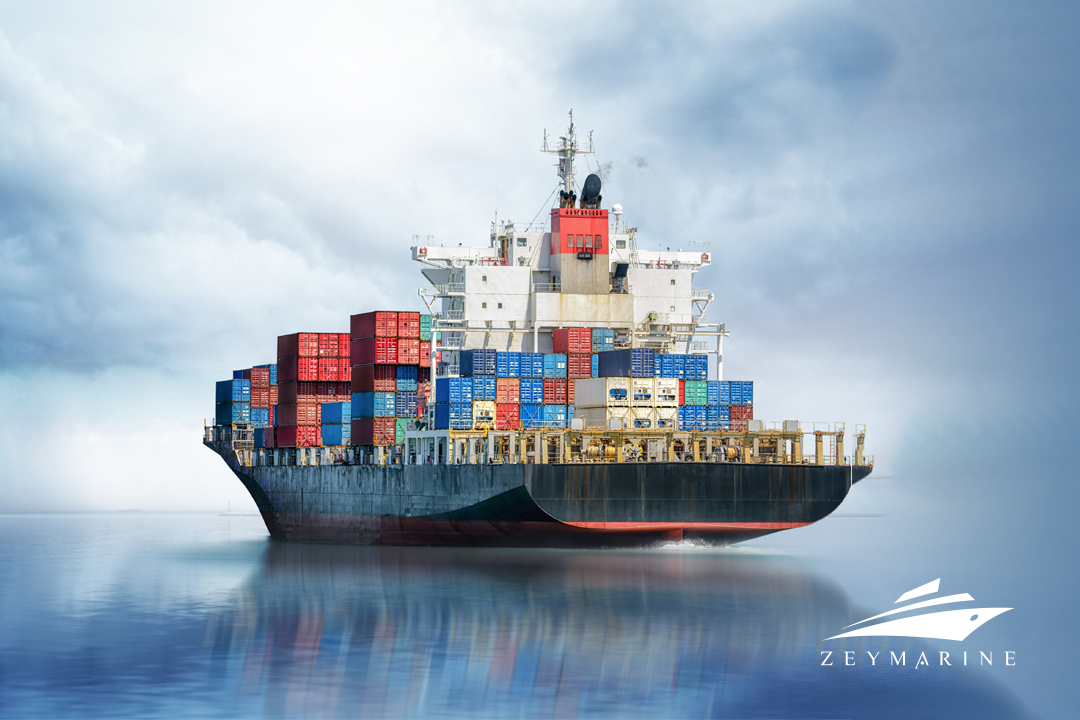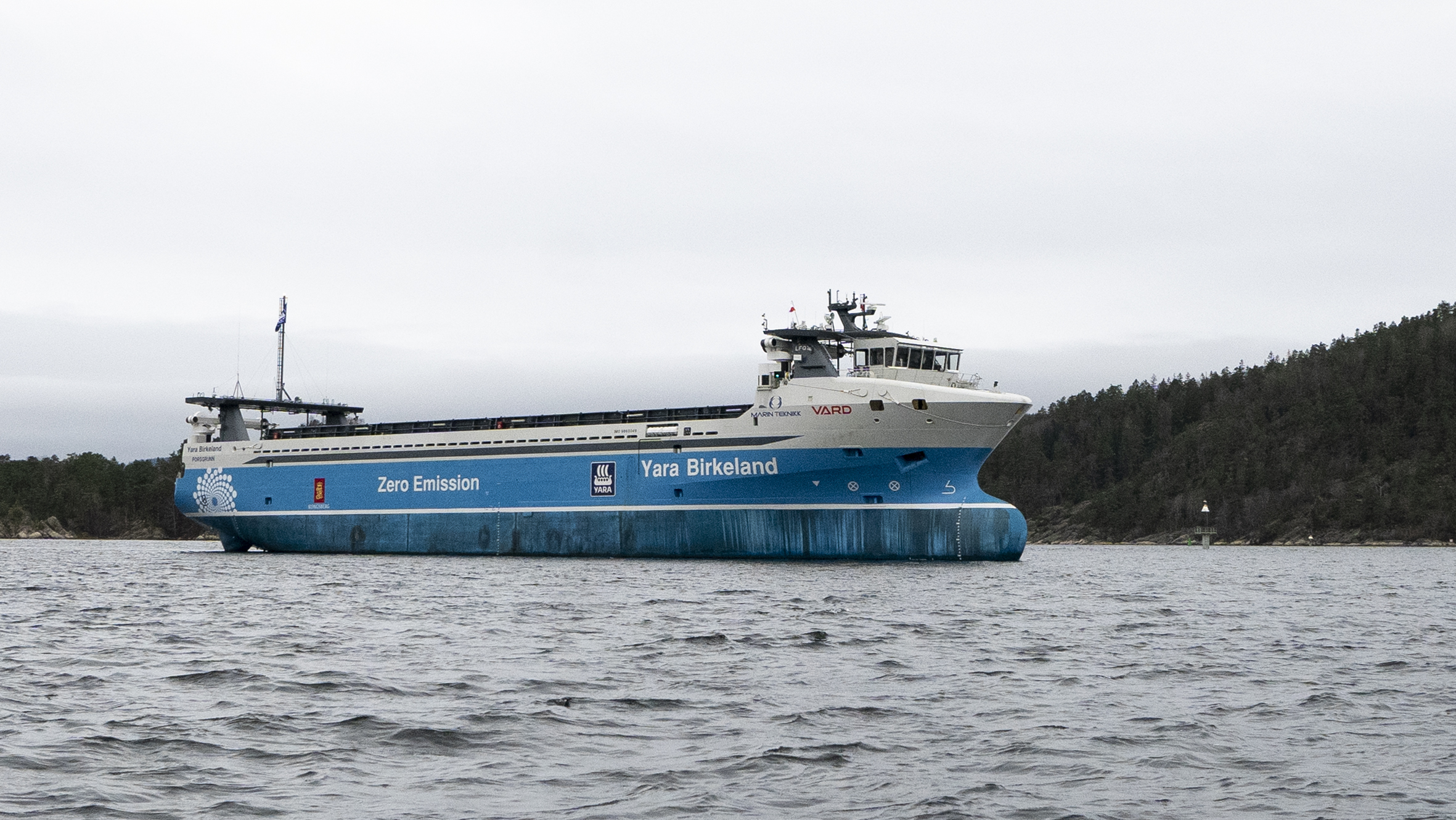Wait a minute, is that a robot operating my ship?
We’re heading into a new era where a fleet of dynamic, digital shipmates will replace crew members. How far have we come and what does the future hold?
Automation on Ships
Rapid technological advancements in the marine sector will lead to the commercial usage of autonomous ships, whether they are completely autonomous or controlled remotely. These huge maritime robots are made to carry out a wide range of tasks that are typically done by human crew members. Autonomous ships are designed to effectively and precisely handle the many tasks associated with open ocean navigation, cargo management, and collision avoidance.
The Yara Birkeland is frequently praised for being the world’s first entirely electric and autonomous container ship. This Norwegian marvel, created by the technology company Kongsberg and the chemical corporation Yara International, exemplifies the possibilities of autonomous marine technology.
The ship uses a variety of sensors, such as radar, LIDAR, and cameras, together with highly developed AI algorithms to navigate; this enables it to identify and avoid obstructions, plot the best trajectory, and even dock on its own. Its electric propulsion mechanism not only turns it into an environmentally responsible substitute, but it also shows how sustainability and cutting-edge technology can coexist.
Benefits of Automation
For the most part, minor or severe maritime accidents take place due to human error. The United States Coast Guard report concluded that at least three-quarters of the marine incidents are human-based. Fatigue and distress, deficiencies in maintenance, misinformation and poor communication lead to navigation-related accidents.
Autonomy’s response such as anti-collision alert systems, sensors and piloting assistants seems to go a long way. Even though there is not enough study to substantiate the efficiency because of the lack of enough numbers of autonomous vessels on duty, taking into account all the possible scenarios, it is estimated that autonomy will decrease the number of navigation-related accidents.
However, according to several studies, most devastating incidents that occur on vessels are non-navigation-related such as water ingress, fire and explosion. Nevertheless, recent developments in autonomous technology aim to remediate this. For instance, the Legislative Assessment for Safety Hazards of Fire and Innovations in Ro-ro ship Environment (LASH FIRE) project converges to restrain inflammation without human interposition. The project is funded by the European Union, still under development. The main goal is to dynamically detect, follow, and suppress fires in real-time. LASH FIRE is not dearie in terms of disaster-avoid enterprises. After intentions are concretised, the maritime industry will become safer than ever before.
The Yara Birkeland, the world’s first fully electric and autonomous container ship designed by Kongsberg, aims for zero-emission. Even though the current route of the vessel is short-range, hopes for ocean-range voyages are realistic.
Likewise, a fully autonomous, AI-powered marine research vessel named after a famous vessel which had great importance for American history and transported Pilgrims to the New World, the Mayflower substantiated the possibility of autonomic power. Without the help of a captain or fossil fuels, it crossed the Atlantic Ocean and became the first big ship to achieve this. In the foreseeable future high numbers of autonomous ships on transoceanic ships are expected.
Alongside autonomous technology, the maritime industry can also get rid of its notoriety stemming from spill events. Enormous strides have been made in the maritime industry during the last fifty years of period by reducing oil spills to a large extent. Additively, with the World’s first autonomous spill-response vessel produced by Sea Machine Robotics and tested by the U.S. Coast Guard, it will take a step further. To reduce the display of toxins and hazards, the remote autonomous command from a seaward location. Under favour of popularized spill-response vessels, water contamination could materially diminish.
Piracy is still a major issue for shipping yet taken into account whilst autonomous vessels are designed. Fully autonomous ships with no one on board eliminate the probable attacks on the crew. Because the new design does not contain embarking it is rather impossible to board the vessel with ease. Besides, if pirates somehow manage to approach, in consequence of the vessel being controlled by AI or a nonmarine facility, it is impossible to control the craft.
Challenges
The lack of necessity for labour will likely be the main problem in the future. There are worries about seafarers losing their jobs as shipping becomes more autonomous. Creating plans to assist and retrain displaced workers is a crucial social responsibility.
Complexity is an issue for autonomy. Making navigational judgments requires real-time processing of the massive quantity of data supplied by sensors. For this, sophisticated AI algorithms that can comprehend complicated situations, foresee possible risks, and make wise judgments are needed.
Cyberattacks have the potential to interfere with navigational systems or control mechanisms on autonomous ships. It is essential to have strong cybersecurity defences against these kinds of attacks.
A complicated web of international laws regulates the marine industry. It will need international collaboration and standardization efforts, which can be drawn out and lengthy, to adapt current standards to autonomous ships. The IMO is working diligently in this field.
Related Articles








